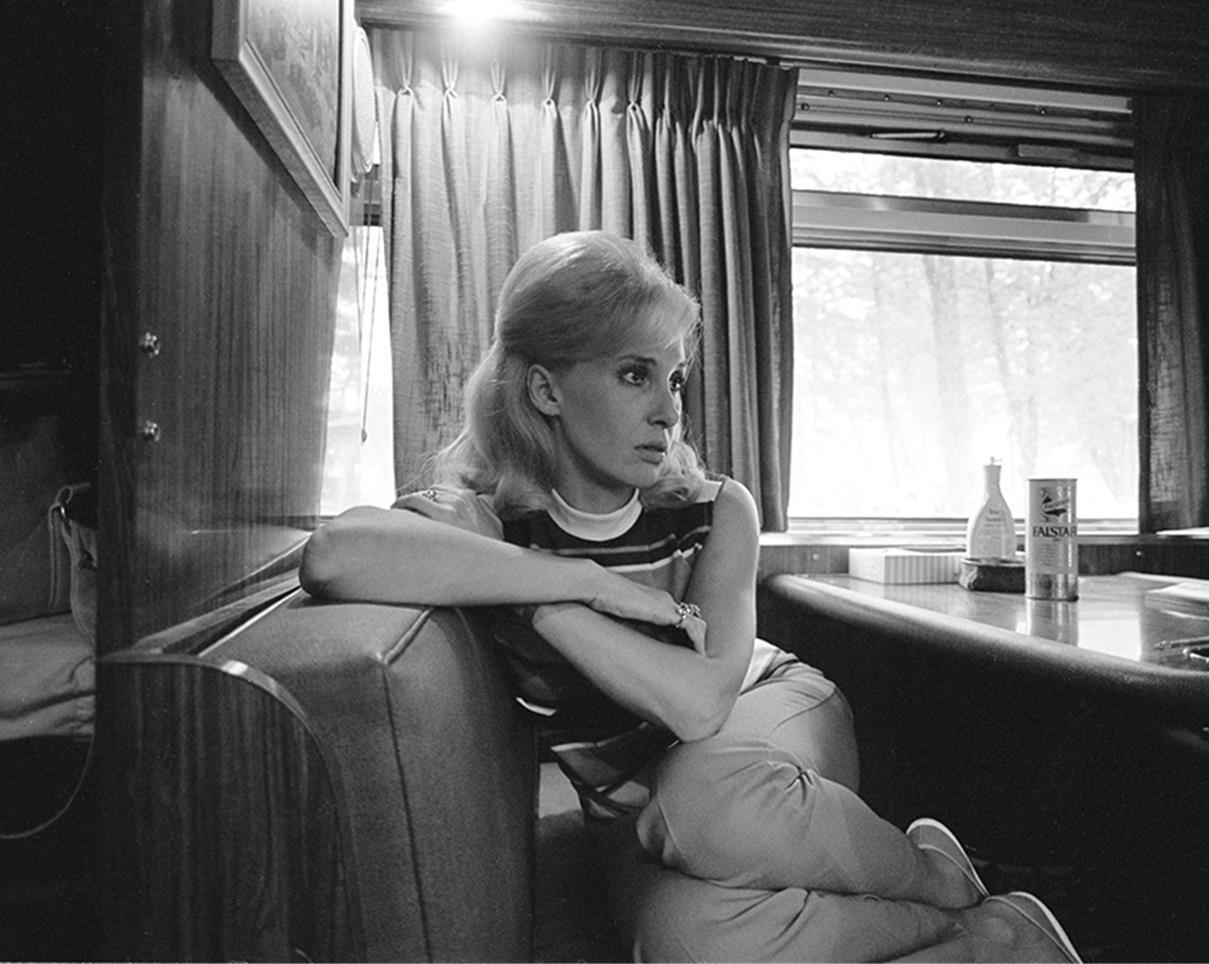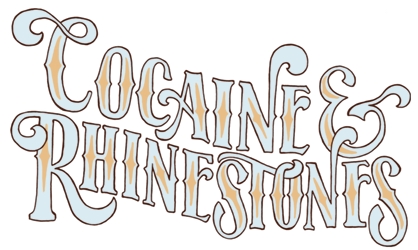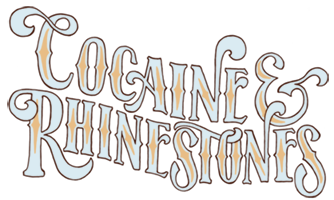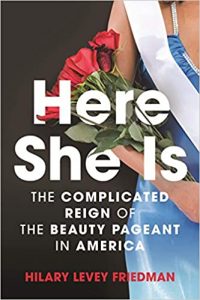
Contents (Click/Tap to Scroll)
- Primary Sources – books, documentaries, etc.
- Transcript of Episode – for the readers
- Liner Notes – list of featured music, online sources, further commentary
Primary Sources
In addition to The Main Library and the Season 2 Library, these books were used for this episode:
Transcript of Episode
As part of my agreement with Simon & Schuster to publish a book adaptation of Season 2, the transcripts that have been freely available for over a year will be temporarily removed from this website. Please consider ordering a copy of Cocaine & Rhinestones: A History of George Jones and Tammy Wynette through your favorite local bookstore or requesting that your local library order a copy you can check out.
Liner Notes
Excerpted Music
This episode featured excerpts from the following songs, in this order [with links to purchase or stream where available]:
- Tammy Wynette – “Til I Get It Right” [Amazon / Apple Music]
- Tammy Wynette – “Another Lonely Song” [Amazon / Apple Music]
- George Jones & Tina – “The Telephone Call” [Amazon / Apple Music]
- Tammy Wynette – “(You Make Me Want to Be) A Mother” [Amazon / Apple Music]
- Tammy Wynette – “I Still Believe in Fairy Tales” [Amazon / Apple Music]
- Tammy Wynette – “Bedtime Story” [Amazon / Apple Music]
- George Jones – “Heartaches & Hangovers” [Amazon / Apple Music]
- Tammy Wynette – “The Bottle” [Amazon / Apple Music]
- George Jones – “These Days (I Barely Get By)” [Amazon / Apple Music]
- George Jones – “I Just Don’t Give a Damn” [Amazon / Apple Music]
- George Jones – “Wean Me” [Amazon / Apple Music]
- George Jones – “The Battle” [Amazon / Apple Music]
- George Jones – “A Drunk Can’t Be a Man” [Amazon / Apple Music]
- Tammy Wynette – “Your Memory’s Gone to Rest” [Amazon / Apple Music]
- Tammy Wynette – “Til I Can Make It on My Own” [Amazon / Apple Music]
- Tammy Wynette – “You and Me” [Amazon / Apple Music]
- Tammy Wynette – “That’s the Way It Could Have Been” [Amazon / Apple Music]
- George Jones & Tammy Wynette – “Golden Ring” [Amazon / Apple Music]
- George Jones & Tammy Wynette – “Near You” [Amazon / Apple Music]
- George Jones & Tammy Wynette – “Southern California” [Amazon / Apple Music]
Excerpted Video
These videos were excerpted in the episode. For any number of reasons, YouTube (or DailyMotion) may remove them in the future but here they are for now:
Commentary and Remaining Sources
These Liner Notes will be brief.
Nothing about this intro was me giving my opinion of what the Miss America pageant should or should not have done at any point in history. This was a miniature overview of an entity in the entertainment business who took it upon themselves to declare certain political positions at certain points in history, then had to deal with the consequences of doing so, usually by scrambling to appease whoever it was they thought needed to be appeased. As with anything I’m ever discussing besides music, this is only part of the Miss America story because it’s the part of the Miss America story that is relevant to the bigger story I’m telling in Season 2.
As with the rest of the intros in this season, my sources were many and varied but the one book I read on this topic was Here She Is: The Complicated Reign of the Beauty Pageant in America by Hilary Levey Friedman. This book was a great source of information but I found the author’s bias throughout the book pretty annoying. Her mother was a Miss America and she judges beauty pageants herself, so even while detailing (for instance) the objectively horrible and unforgivable practices in the child beauty pageant ecosystem, she still seems to be building a sort of apologist’s case in support of pageants overall.
Amy Argetsinger wrote another book on just Miss America, called There She Was: The Secret History of Miss America. I haven’t read the book because it hadn’t been published when I wrote Season 2 but, after I found out she was writing it, I did have an opportunity to ask Amy a few questions to make sure I correctly understood certain things about the history of Miss America and I do feel confident in recommending her book to anyone interested in this subject.
I have one tiny correction to the main body of this episode, which is it was actually a magazine called Modern People that ran a cover story about Burt Reynolds dating multiple women including Tammy Wynette in April 1976. At this time, the logo of Modern People kind of hid the word “modern” inside the “p” of the word “people,” so I thought I was just looking at an old issue of People magazine when I saw it. However, there was a cover story on Sally Field in an April 1977 issue of People magazine. I wasn’t able to read it but the cover mentions her having “a fling” with Burt Reynolds, so I would be very surprised if Tammy isn’t also mentioned there. It’s just that it would be one year later than what I said in the episode. Still, I wanted to be clear the cover story I was referring to in the episode was actually the one in Modern People, not People.
There was nowhere it made sense to include it in the episode but my research in the archives of the Country Music Hall of Fame and Museum turned up a pretty funny occurrence. As mentioned, Larry Gatlin had a big problem with his younger brother being romantically involved with Tammy Wynette. Well, the other thing that was true about Larry Gatlin back in the day, which even he later admitted, is that he was bit of a prick. When some reporter asked Larry how come he always left right after performing a concert instead of staying to sign autographs for fans the way Tammy Wynette did, he responded with some nonsense about how he leaves it all on the stage each night and if Tammy has the energy to stay and sign autographs it’s because she’s not working hard enough during the show. As you can imagine, Tammy did not appreciate this comment. In an August 1978 issue of her fan club newsletter, The First Lady News (and this is the same issue with photographs of her wedding to George Richey), Tammy shares Larry Gatlin’s comment with her fans and then says “You tell that little S.O.B. to follow me around the country for 2 months and I’ll show him what it’s like to have his tongue hangin’ out.”
When the podcast returns, it will be with an episode on Billy Sherrill. He’s been a recurring character throughout this season, whenever details of Tammy Wynette’s music or George Jones’ music on Epic is discussed, and considering he and Owen Bradley are the two individuals who single-handedly dictated the sound of country music recorded in Nashville to a greater degree than any other producers, that’s worth deeper exploration at this point in Season 2. See ya there.


